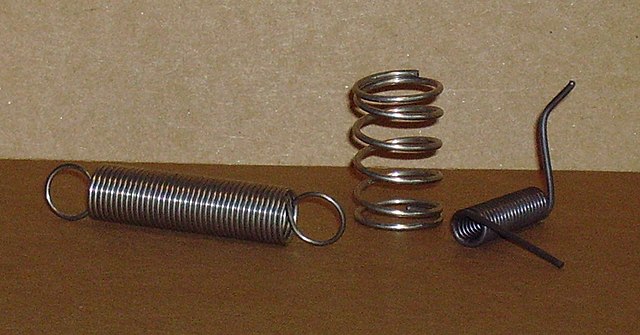An alpha helix is a sequence of amino acids in a protein that are twisted into a coil.
Contrast of helix end views between α (offset squarish) vs 310 (triangular)
Ramachandran plot (φ, ψ plot), with data points for α-helical residues forming a dense diagonal cluster below and left of center, around the global energy minimum for backbone conformation.
An α-helix in ultrahigh-resolution electron density contours, with oxygen atoms in red, nitrogen atoms in blue, and hydrogen bonds as green dotted lines (PDB file 2NRL, 17–32). The N-terminus is at the top, here.
Leucine zipper coiled-coil helices & DNA-binding helices: transcription factor Max (PDB file 1HLO)
A helix is a shape like the cylindrical part of a coil spring or machine screw. It is a type of smooth space curve with tangent lines at a constant angle to a fixed axis. Helices are important in biology, as the DNA molecule is formed as two intertwined helices, and many proteins have helical substructures, known as alpha helices. The word helix comes from the Greek word ἕλιξ, "twisted, curved".
A "filled-in" helix – for example, a "spiral" (helical) ramp – is a surface called a helicoid.
(l-r) Tension, compression and torsion coil springs
A machine screw in macro view
Crystal structure of a folded molecular helix reported by Lehn et al.
A natural left-handed helix, made by a climber plant








